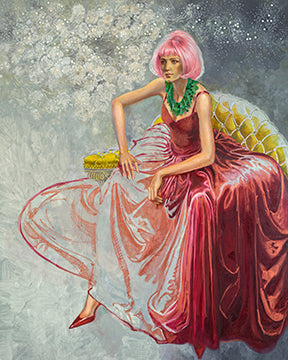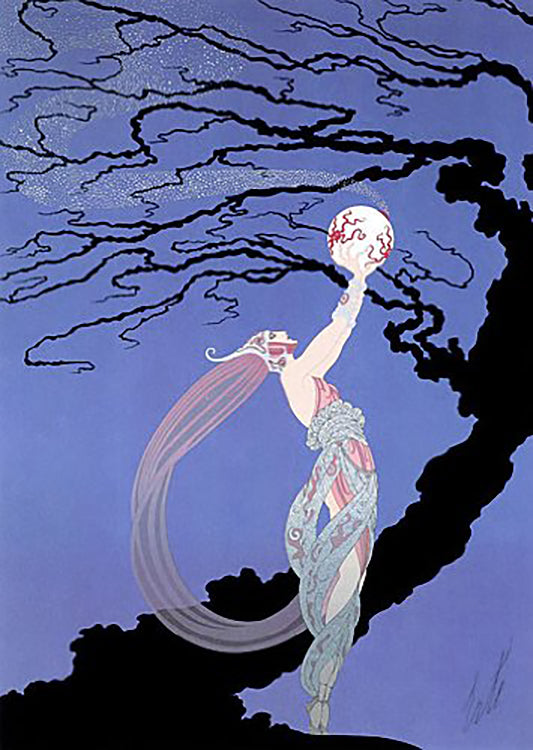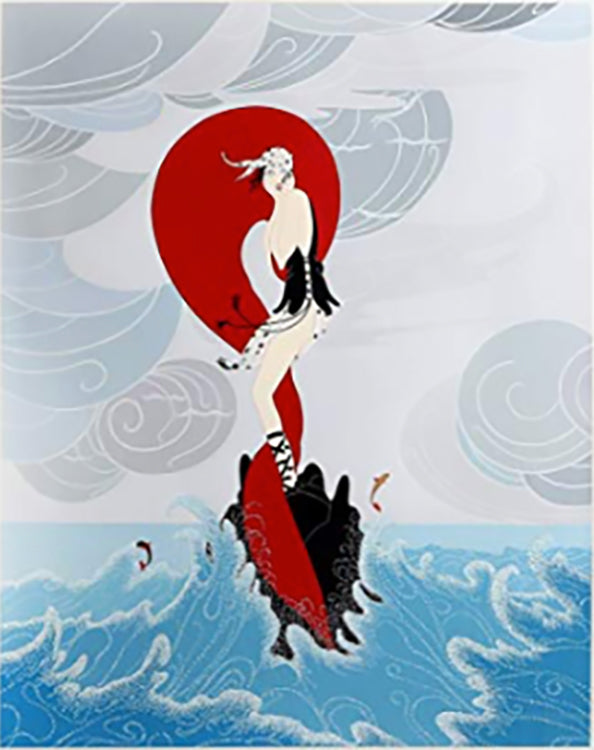The World of Art (Mir Iskusstva)
by Cathy Locke
The World of Art (known in Russian as Mir Iskusstva) was both an art movement and art magazine that was most active for six years between 1898 and 1904. The art movement was founded in 1898 by a group of students from the Imperial Academy in St. Petersburg. These students included: Alexandre Benois, Konstantin Somov, Dmitry Filosofov, Léon Bakst and Eugene Lansere. The aim of this art movement was twofold: First, these artists wanted to address the low artistic standards of their predecessors the Wanderers. Second, the members wanted to consolidate all Neo-Romantic Russian artists under one banner. The subjects of particular interest to these artists were carnivals, dreams and fairy tales. The idea was to create the concept of painting as a magical experience. They turned their attention to the extravagant rococo world of 17th century France and Catherine the Great’s Russia, where the endlessly theatrical worlds of masquerade existed.
The magazine was co-founded in 1899 in St. Petersburg by Alexandre Benois, Léon Bakst and Sergei Diaghilev, who was editor in chief. Sergei Diaghilev was a very successful promoter of the arts. It was mainly due to Diaghilev’s efforts that the World of Art became so successful and he most certainly was behind the financing of the magazine. Diaghilev organized art exhibitions under the name of Mir Iskusstva. These exhibitions would travel to Paris and often throughout Europe giving Russian artists exposure that they never would have had without Diaghilev’s efforts. These exhibitions attracted not only Russian painters but many illustrious painters from abroad. Some of the most notable Russian painters were Valentin Serov, Mikhail Vrubel, Mikhail Nesterov and Isaac Levitan. The magazine was called Mir Iskusstva, which gave Diaghilev a vehicle to advertise his artistic projects and it gave the members of the World of Art a place to talk about their theories on art. By expanding the thematic borders of art, these artists were able to use their magazine to revolutionize Russian art.
Diaghilev also produced concerts, operas and his famous Ballets Russes. The members of the World of Art designed book covers, stage sets and costumes for Diaghilev’s Ballets Russes. Artists like Léon Bakst and Alexander Golovin became particularly famous for their work in Diaghilev’s Ballets Russes. The theater designs these artists created also greatly influenced their paintings.
Throughout the years from 1904 to 1927, the loosely affiliated members of the World of Art group floated in and out of activity. From 1904 to 1910 most of the artists within the group in Moscow had become members of the Union of Russian Artists. Diaghilev was constantly looking for ways to unite the St. Petersburg and Moscow members. As the publication Mir Iskusstva began to push the boundaries of art, new members started to join the World of Art movement. In 1910 the group took on new members in Moscow from the Russian Avante Garde which included Nathan Altman and Vladimir Tatlin. By 1917 most of the members of the Moscow group, the Jack of Diamonds, had also joined. In 1927 Stalin put an end to all organized groups of artists, so their last exhibition was held outside of Russia in Paris that same year.
About the Author
Cathy Locke is an award-winning fine art painter, professor, and published writer, specializing in Russian art of the 19th and 20th centuries. She organizes annual art excursions to Russia every summer and is the editor of Musings-on-art.org.
Russian Art Tours – www.russianarttour.com
Cathy Locke’s artwork – www.cathylocke.com




















